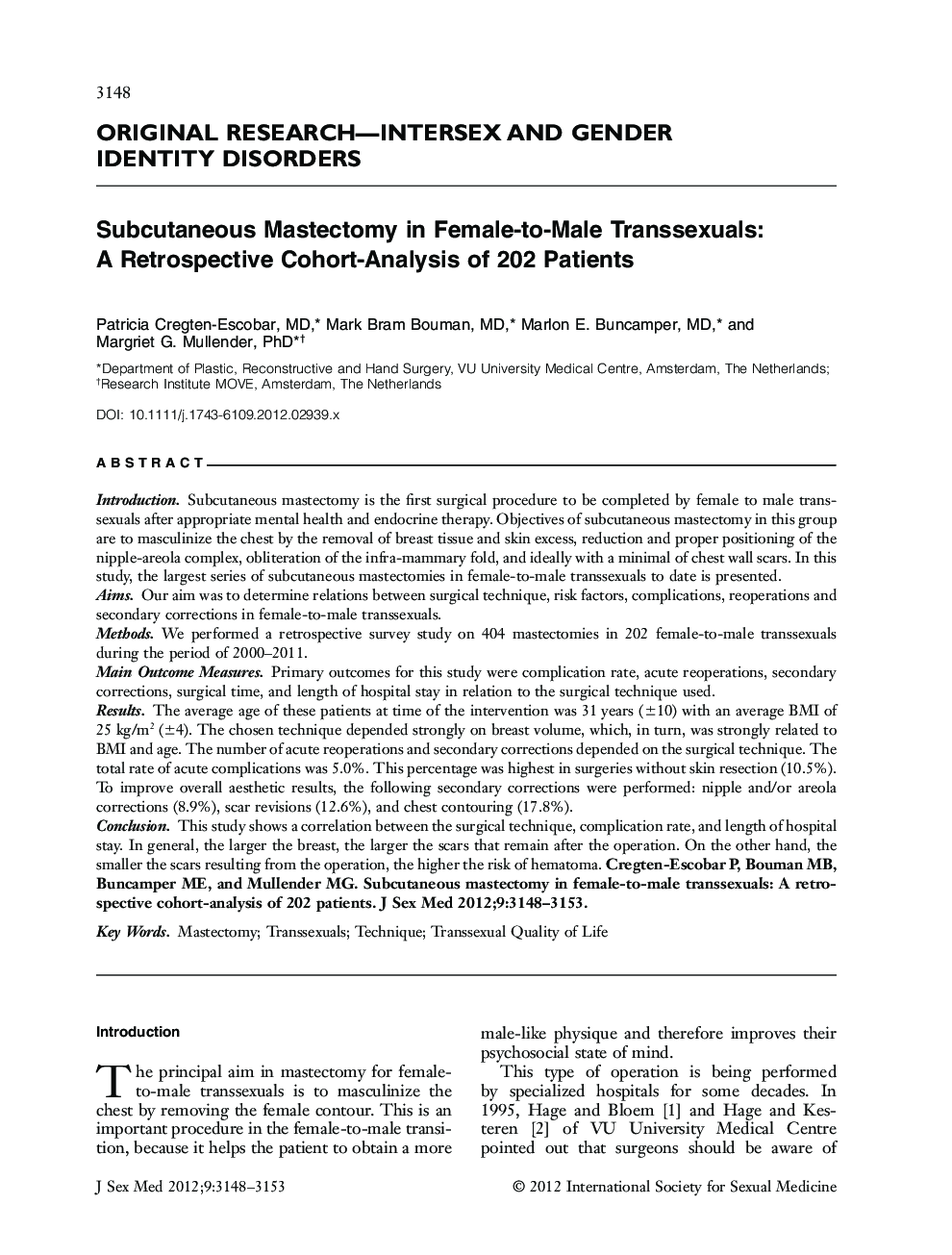| کد مقاله | کد نشریه | سال انتشار | مقاله انگلیسی | نسخه تمام متن |
|---|---|---|---|---|
| 4270869 | 1610895 | 2012 | 6 صفحه PDF | دانلود رایگان |

ABSTRACTIntroductionSubcutaneous mastectomy is the first surgical procedure to be completed by female to male transsexuals after appropriate mental health and endocrine therapy. Objectives of subcutaneous mastectomy in this group are to masculinize the chest by the removal of breast tissue and skin excess, reduction and proper positioning of the nipple‐areola complex, obliteration of the infra‐mammary fold, and ideally with a minimal of chest wall scars. In this study, the largest series of subcutaneous mastectomies in female‐to‐male transsexuals to date is presented.AimsOur aim was to determine relations between surgical technique, risk factors, complications, reoperations and secondary corrections in female‐to‐male transsexuals.MethodsWe performed a retrospective survey study on 404 mastectomies in 202 female‐to‐male transsexuals during the period of 2000–2011.Main Outcome MeasuresPrimary outcomes for this study were complication rate, acute reoperations, secondary corrections, surgical time, and length of hospital stay in relation to the surgical technique used.ResultsThe average age of these patients at time of the intervention was 31 years (±10) with an average BMI of 25 kg/m2 (±4). The chosen technique depended strongly on breast volume, which, in turn, was strongly related to BMI and age. The number of acute reoperations and secondary corrections depended on the surgical technique. The total rate of acute complications was 5.0%. This percentage was highest in surgeries without skin resection (10.5%). To improve overall aesthetic results, the following secondary corrections were performed: nipple and/or areola corrections (8.9%), scar revisions (12.6%), and chest contouring (17.8%).ConclusionThis study shows a correlation between the surgical technique, complication rate, and length of hospital stay. In general, the larger the breast, the larger the scars that remain after the operation. On the other hand, the smaller the scars resulting from the operation, the higher the risk of hematoma. Cregten‐Escobar P, Bouman MB, Buncamper ME, and Mullender MG. Subcutaneous mastectomy in female‐to‐male transsexuals: A retrospective cohort‐analysis of 202 patients. J Sex Med 2012;9:3148–3153.
Journal: The Journal of Sexual Medicine - Volume 9, Issue 12, December 2012, Pages 3148–3153